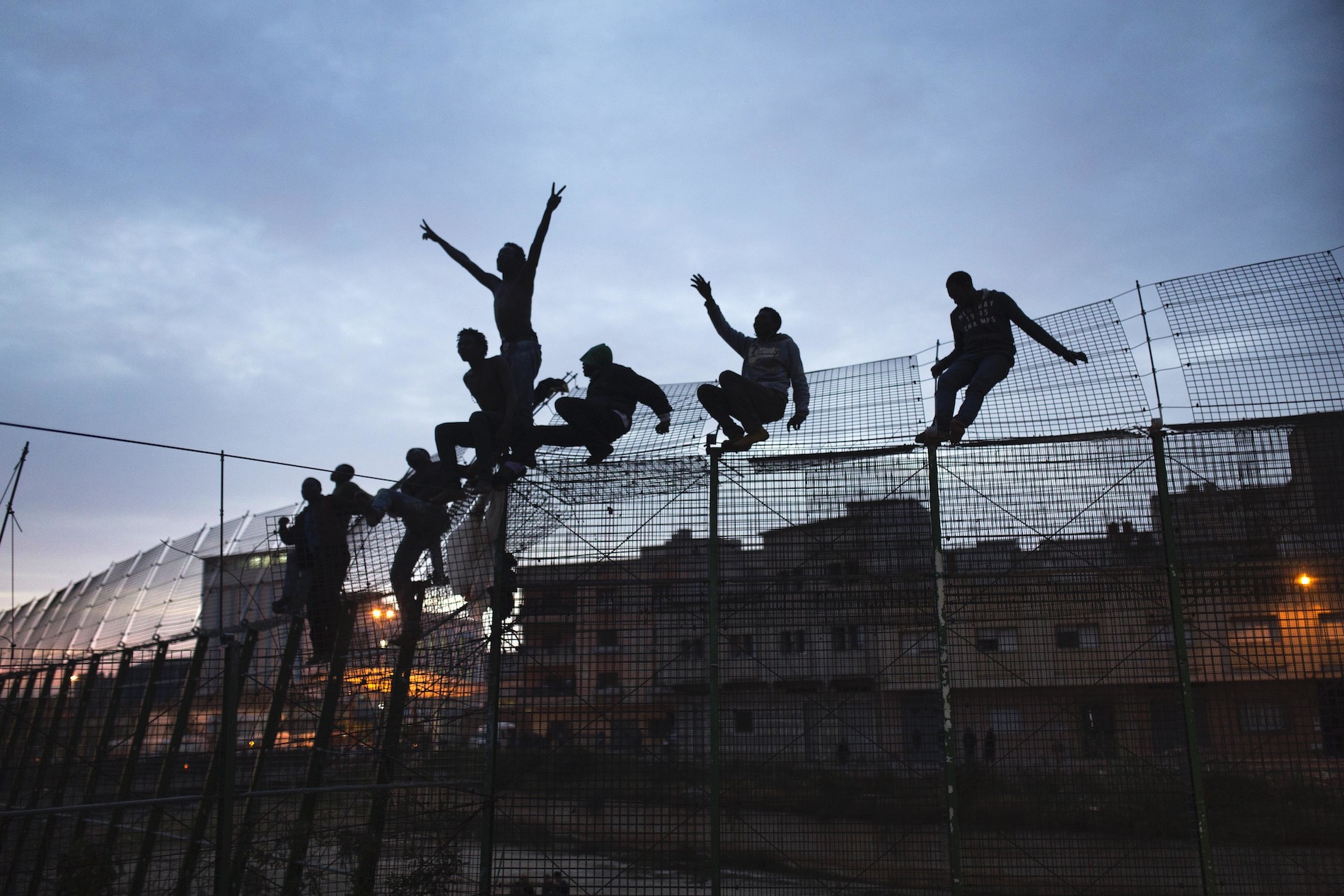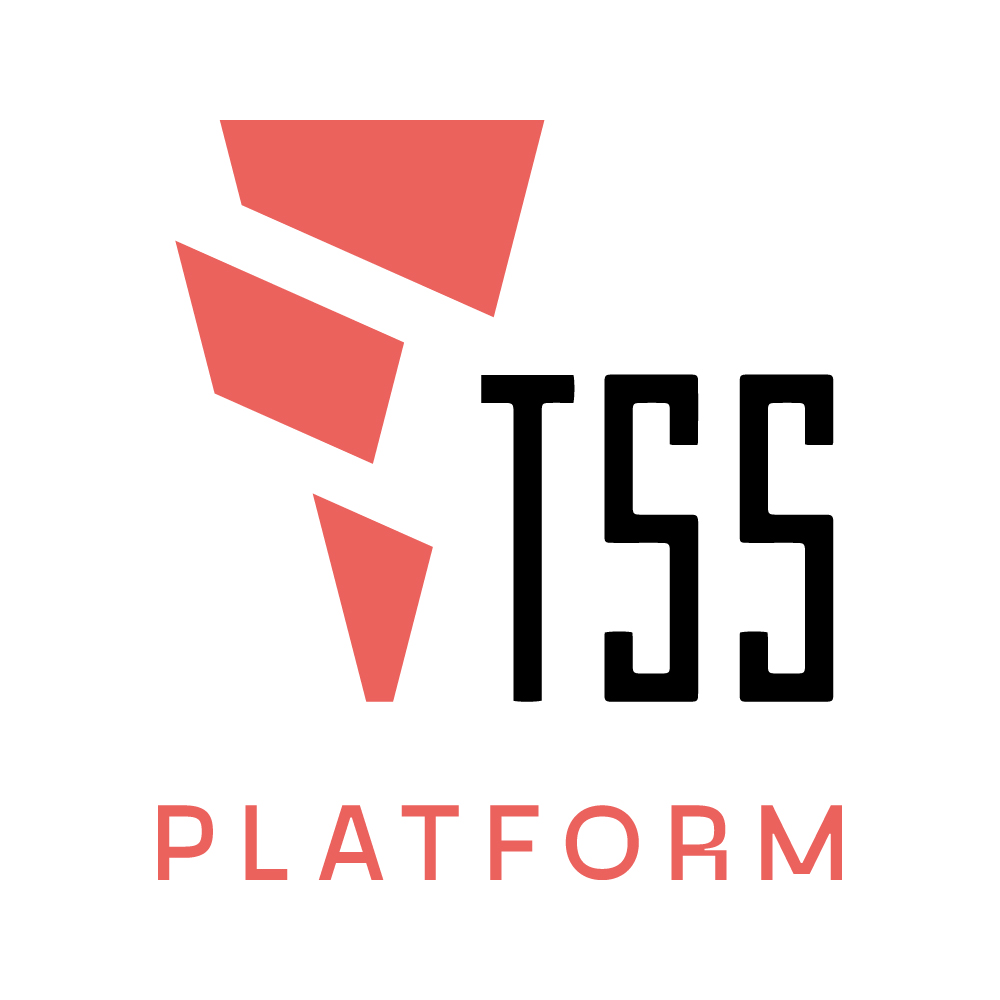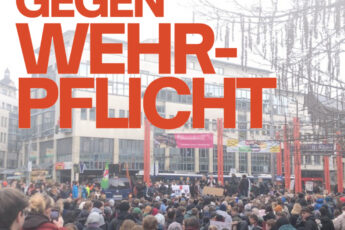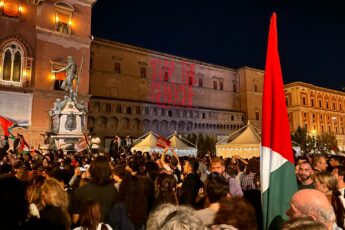
by TRANSNATIONAL SOCIAL STRIKE PLATFORM
Read the second part at this link.
We publish the first of a two-part statement on the transformations and clashes that are making mobility and migrant labor a key field of struggle in transnational Europe. After the outbreak of the coronavirus pandemic we argued for the need to deepen our transnational initiative. While public attention was focused on closures, we emphasized how the pandemic showed the centrality of migrant labor: migrants are the majority of essential workers in transport, logistics, care or agriculture. Moreover, the pandemic made clear that mobility is a battlefield between states’ design to govern migrant labor in the attempt to make it more prone to exploitation and the political use of mobility by migrants seeking to improve their living and working conditions. In these months, several paths of struggle arose and expanded, promoting communication and transnational organization on these terrains. The network Essential Autonomous Struggles Transnational (EAST) focuses on struggles related to social reproduction, emphasizing the role of migrant women in them. EAST has built a space for discussion and organization that connects in particular Central and Eastern Europe with the broader transnational dimension, and is launching a day of feminist mobilization on July 1st against the attacks to the Istanbul Convention, starting from Turkey to address the current overall patriarchal backlash. The Transnational Migrants Coordination (TMC) was born thanks to the communication between Italian and French collectives of migrants and sans-papier, and now involves different collectives in Europe, Turkey, Morocco and Latin America. In order to show and consolidate the connections between autonomous initiatives of migrant women, men and lgbt, refugees, asylum seekers and sans-papier and solidarity groups, the TMC called for a day of transnational struggle of migrants on May 1st. The call, signed by dozens of groups, emphasized the importance of attacking the European border regime, claiming a European residence permit disconnected from work, income and family. This fostered a unprecedented communication between different migrant collectives and allowed making the voice of migrants heard within the May 1st traditional mobilizations. However, the discussions that started around May 1st and are continuing after then, revolve around the need to consider migrants’ struggles, including those against the European border regime, in their transnational dimension and to connect struggles against racism with those against exploitation and patriarchal violence. This first text is dedicated to the new European pact against migrants under discussion by the EU and the conflicts around the asylum system. The second part will place the new pact in the context of the wider transnational labor market that is made up by the movements of migrants and the attempts to govern these movements for the sake of profit-making. These texts are meant as the beginning of a collective discussion on the stakes related to the transformations taking place in the transnational Europe of the post-pandemic reconstruction and to elaborate tools for struggling and communicating across the borders.
The new European Pact on Migration and Asylum, which has been under discussion for several months, has been confronted by a new resurgence of migrant arrivals after months of relative decline. Border blocks connected to virus containment are being undermined, not only by gradual reopening of movements, but also by the mass reaction to the economic and social chaos left by the pandemic. Although the pact is designed to overcome the crisis in the asylum system that erupted in the aftermath of the 2015 ‘migrant storm’, the Lampedusa hotspot overflowing with men and women, stands as a reminder to European planners that their chase after migrants’ movements is structurally behind schedule. Furthermore, the images of migrants of all ages pushed back by the Spanish army on the beach of Ceuta are demonstrative of the normalisation of European violence against migrants. But the continuous and at the same time always ‘contingent’ pressure of migrants on European borders, as well as the speed with which, whatever their legal status, they jump from one job to another and manage to organise themselves in the most disparate places of work and life, show the existence of a fault line of confrontation that must be grasped in its globality. Faced with the apparent closure of borders, we are in fact witnessing an increasing multiplication and fragmentation of mobility governance schemes and an enormous heterogeneity of conditions in which migrants end up finding themselves.
Over the years, faced with the refusal of migrants to submit to these flow policies, accepting inclusion through exploitation, the response of states and of the European Union has been a progressive reduction of the spaces for regular migration to EU countries, caging it within rigid schemes of international recruitment. This has diverted an increasing number of migrants towards the asylum system, with a double consequence: on the one hand, men and women have continued to move without any authorisation. On the other hand, this has pushed European governments and the Commission to continuously invent schemes able to connect efficient models of reception policies with those of integration in the labour market. It is against this background that we can read what lies behind the apparent chaos of the European situation and the role of the new pact on migration and asylum.
The pact deals mainly with asylum, since nowadays this is the frontline of the clash between migrants’ claim to freedom and the attempt to convey it into the channels of controlled mobility, but it should be read within a complex system that links a transnational Europe to numerous ‘third’ countries formally outside its borders. In a situation characterised by a high fragmentation of national laws on migration, wide operational margins for individual countries and strategies based on mere electoral calculations, the European Commission is trying to advance a common design accompanied by the threatening promise, reiterated in recent days by Commissioner Johansson, to “stop the departures”.
The current system, based on the Dublin Regulation, binds the countries of first arrival in Europe to take charge of asylum applications and, above all, blocks migrants in these countries from entering other EU states (the so-called “secondary movements”). EU migration policies are thus activated both at the external borders and within the Schengen area to prevent the free mobility of migrants by hindering their access to a “regular” presence. This is coupled with the active role that the governments of the EU’s core countries play in this system, primarily Turkey, Tunisia, Libya and Morocco in the south, and Ukraine in the east. The European objective is not to stop mobility, but to govern and control it. In order to do this, it is first necessary to hinder the migrants’ freedom of movement as much as possible. For this reason, by focusing on “consolidating the strategy of prevention of arrivals”, the new pact aims at an “efficient” reduction of the apparent ungovernability of access in Europe. In doing so, the pact recognises migrants’ use of the right to asylum and punishes it through the outsourcing of controls and the de facto emptying of procedures for access to refugee status.
Following a logic à la McKinsey, the consulting company used by several Member States in the management of refugees and by the Commission itself to design the ‘hotspot’ system, according to the new pact the assessment procedures must be guided by the logistics of efficiency. First, they are outsourced through the establishment of spaces that, although internal to the EU, are not formally so for migrants, thus legalising the system of mass rejections implemented in recent years. Secondly, the “nationalisation” of the right to asylum is reinforced through the use of the category of “safe third country”: not only is the guarantee of asylum and protection always in the hands of a state, but the very possibility of its recognition is increasingly linked to the country of origin. The label of one’s own nationality thus becomes a central element for the efficiency of the system and for speeding up the distinction between economic migrants, to be rejected, and asylum seekers, to be granted, in dribs and drabs, some kind of document for staying in the EU. In reality, this system is rather haphazard and only works in a relatively standardised way: if you belong to a nationality that has had few asylum applications recognised in previous years (less than 20%), rejection procedures are accelerated. In fact, by means of a statistical trick, entire regions of the world – Africa and Asia in primis – are practically declared safe and migrants who have arrived in recent years or are about to arrive in Europe are already condemned to structural irregularity. A fate that already befalls migrants from countries such as Afghanistan, destabilised by years of war and whose security, sanctioned by the withdrawal of US troops, triggers the exponential increase in expulsions and deportations. The pact also provides for a number of instruments to deal with unforeseen contingencies, thanks to the possibility of “legalising” actions to derogate from the asylum directive by suspending application registration procedures for up to one month. In any case, the individual nature of the right to asylum is declared null and void, as is already the case with mass rejections in the Mediterranean or along the EU’s eastern borders. The clear intention is to counteract the movements of migrants, and their ability to force the asylum system en masse, with solidarity between states, enshrined in mutual promises to quickly close asylum applications and contribute to the joint effort of expulsion. In the face of tensions within Europe, between Europe and the Commission and between the EU and neighbouring countries such as Turkey or Morocco, the principle that everyone does not want to deviate from is to reiterate that there must be no room for migrants for freedom of movement. In Europe’s intentions, this should also help to increase the number of expulsions of applicants for humanitarian protection already present on the territory, which today also take place in countries that are traditionally more inclined to fulfil their commitments under international refugee conventions, such as Sweden or Germany, without any consideration for the actual conditions of risk or danger of those rejected.
However, this criminal solidarity between states remains voluntary and flexible for the time being. This shows once again that the issue of asylum remains, in fact, a ‘problem’ only for southern and western European states. The proclaimed failure of the proposals for a system of rigid quotas for relocating migrants has been replaced by a principle which, by allowing a choice between relocating or sponsoring (i.e. covering the management and expenditure) of returns, economically accounts for the management of migrants, but in no way overcomes the Dublin system: the criteria for establishing the state responsible for examining an asylum application are maintained in this new regulation as well. Therefore, there is no sign that this new pact will be able to overcome the conditions that generated it, also because the return policy seems to function more as a warning to regulate migrants and control their mobility than as an effective tool to prevent arrivals or carry out expulsions. However, the political message to migrants is clear: most asylum applications will be rejected even before formally arriving on European soil, also thanks to the deployment of the new European border and coast guards – the first EU armed corps – indefinite imprisonment in detention centres or open-air incarceration in countries that the same European migration policies and those of its states have transformed into real border states, such as Turkey, Tunisia, Libya or Morocco.
In the complex system that revolves around transnational Europe, these states increasingly act as special containment zones that go hand in hand with the devaluation and coercive control of migrant labour passing through or employed within them. While they become decompression chambers for surplus labour when viewed from the European perspective, these countries are in turn places of exploitation integrated into the global productive and financial circuits at the service of European and transnational capital. We must therefore reject the temptation to see the function of the pact and what happens at the borders of Europe simply through the lens of transit or blockage with respect to the European Union. Certainly, Europe acts as a regional catalyst both in the productive and financial reorganisation – strong in economic and military capacities that are reflected in the variable geometries of asylum policies, family reunifications and the management of bilateral agreements with third countries – and in the strategies of migrant labour mobility. The centrality of these border-states for the governance of transnational European mobility provides them with a lever of pressure to obtain European funding, i.e. using migrants as a bargaining chip, as shown by the events in Ceuta, the periodic Turkish threats and Italy’s current relations with Tunisia and Libya. While the European government of mobility claims to fix time in an eternal present, migrant men and women continue to move outside of legislation and to contribute to changing it, and with their presence they constantly transform the labour market in unforeseen ways. Asylum seekers thus constitute a pool of labour whose conditions are the result of the very crisis of the asylum system. However, despite the fact that the price they are forced to pay is always that of brutal degradation and blackmail, the frantic attempt to formalise a truly ‘European’ system and the multiplication of interventions and legal figures are a sign of the high level of ungovernability of migrant labour, which is able to creep into the meshes of border policies as well as those of the labour market.
It is therefore fair to ask, in view of the Pact under discussion, whether we are facing a grand return to Fortress Europe. That is not our opinion. This evident tightening of the European Union’s external borders is in fact part of a broader framework, in which the European Commission recognises the need for a workforce to feed the various production chains and aspires to be an actor capable of advancing a continental system for controlling and governing mobility. It is certainly not a question of a homogenisation of national systems or of the different control regimes, but of a centralisation process whose aim is to harmonise the needs of individual states and of the overall system, supporting the differentiation and hierarchization of forms of mobility. Border violence serves, in this sense, to enable a system that increasingly links mobility to the actual needs of a European labour market that is differentiated within itself and presents itself as a constant threat to the demands for freedom of migrant labour. While the member states often continue to follow national logics, often supported by mere electoral calculations, in imposing in some cases economically dysfunctional migration management policies, the European Commission aims to increase the efficiency of production processes by trying to assert the overall interests of European capital. To understand how this happens, it is therefore necessary to widen our gaze and recognize the tensions that crisscross European border politics. If, on the one hand, this contributes to consolidating spaces of mobility and containment differentiated between European countries, in fact, on the other hand, these tensions are part of interventions that reconfigure the overall conditions and movement of migrant labor in transnational Europe. These conditions and this movement will be the subject of a next intervention.





